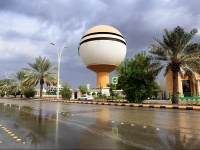
Visual icons in Al-Qassim Region refer to the most prominent natural and urban landmarks in Al-Qassim Region of the Kingdom of Saudi Arabia . These icons are suggestive of mental images of their locations, being architectural or natural icons of that place. Such icons can be used as referential symbols indicative of a specific region – within Saudi culture in general. Urban Icons in Al-Qassim Region Urban monuments built in Al-Qassim represent architectural icons of the region. The Buraydah W...
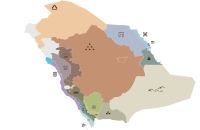
Saudi Architecture Characters Map is a national and urban project implemented in partnership with several governmental and engineering entities. It focuses on documenting the spatial distribution of authentic and diverse architecture in the Kingdom of Saudi Arabia . The project was launched by Crown Prince and Prime Minister, His Royal Highness Prince Mohammed Bin Salman Bin Abdulaziz Al Saud on March 16, 2025. The Saudi Architecture Characters Map Project encompasses nineteen architectural sty...
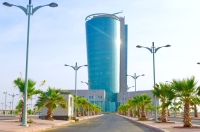
Visual Icons in Jazan Province refer to natural and architectural landmarks and edifices in Jazan Province , located southwest of the Kingdom of Saudi Arabia. These icons are historically and culturally associated with the place where they are located and represent an architectural or natural icon thereof. In fact, they can be used as symbols referring to the province they represent within the framework of Saudi culture in general. Urban icons in Jazan Province Urban landmarks built in Jazan Pr...
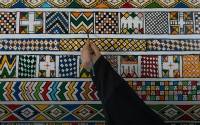
Women in Aseer Province have mastered the art of al-Qattatah since ancient times, referring to the female artists of al-Qatt al-Asiri . Al-Qatt art, harmoniously integrated with the defined surfaces it adorns, represents a cultural and architectural heritage symbolizing the women of the province. Al-Qattatah works with three colors: red, yellow, and blue. These colors are derived from powdered limestones, colored clays, or certain plants and fruits. Al-Qattatah prepares these natural pigments h...
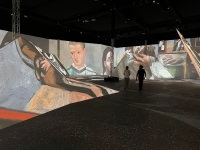
Imagine Picasso Exhibition is an art exhibition organized by the Visual Arts Commission under the Ministry of Culture in Riyadh City , held from February 3 to March 3, 2024. The exhibition aimed to enhance cultural awareness in the Kingdom of Saudi Arabia about the significance of visual art history. Objectives of Imagine Picasso Exhibition The Imagine Picasso Exhibition targets various social groups, including art enthusiasts, professionals, families, and tourists. Its goal is to provide an ar...
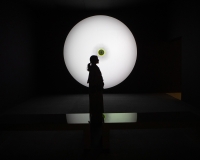
The 'In the Night' Exhibition is an art exhibition organized by the Museums Commission under the Saudi Ministry of Culture in 2024. It featured a diverse collection of contemporary artworks, including paintings, art installations, and sculptures, that explored the concept of night from the artists' perspectives in innovative ways. Location of the 'In the Night' Exhibition The 'In the Night' Exhibition was held at the temporary hall of the Saudi Museum of Conte...
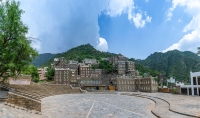
The visual icons in Aseer Province are linked to the locations where they are found, serving as architectural or natural symbols of those areas. They can be used as representations of their respective provinces within Saudi culture in general, including: Rijal Heritage Village, located in Rijal Alma Governorate , is one of the world's heritage sites in the Kingdom of Saudi Arabia and is listed among the best tourist villages in the world by the World Tourism Organization. Historical castle...
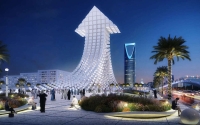
2019 The Custodian of the Two Holy Mosques, King Salman bin Abdulaziz al-Saud, inaugurated the Riyadh Art project as one of Riyadh's four major projects. 2021 The Noor Riyadh festival was held in March 2021 as the first event of the Riyadh Art project. 2021 In July 2021, the Riyadh Art project selected twenty artists to participate in the third edition of the Tuwaiq International Sculpture Symposium, which is considered the second initiative of the project after Noor Riyadh. 2021 The event...

Visual icons in Riyadh City are the physical edifices that distinguish its urban identity. In the capital of the Kingdom of Saudi Arabia , these icons vary between several centers, government entities, or civil facilities, such as the building of the Ministry of Interior , the Suspension Bridge, Riyadh Water Tower , King Abdullah Financial District , and the General Court building. Urban development in Riyadh City Since the beginning of the third millennium, urban development in Riyadh City...
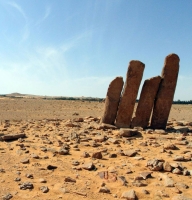
The visual icons in al-Jawf Province are associated with its locations as architectural or natural symbols and can be used as emblems that refer to the province to which they belong, within the broader context of Saudi culture. They are as follows: Olive Since 2007, al-Jawf lands have comprised the largest modern olive farm in the world, as it produces more than five million olive trees and about 15,000 t of olive oil annually. Marid Castle The castle is located in Dawmat al-Jandal Governorate ...
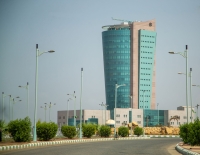
Jazan Province is home to numerous architectural and natural landmarks that serve as visual icons representing the area. Among the prominent icons are: Urban icons - Administrative Tower of Jazan University : Overlooking the Red Sea coast, this tower stands one hundred m tall and comprises eighteen floors. - Wadi Jazan Dam: Accompanied by the Dam Lake, which collects floodwaters from five valleys, the reservoir holds fifty-one million m³ of floodwater. - Castle Roundabout: Located on one of...
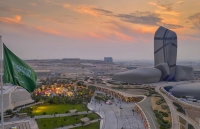
The visual icons in the Eastern Province are associated with their locations as architectural or natural icons. They can be used as symbols referring to the province they belong to, within Saudi culture in general, and include the following: Al-Ahsa Oasis In 2018, it was added to the United Nations Educational, Scientific, and Cultural Organization 'UNESCO' World Heritage Sites list as one of the largest ancient palm oases in the world. King Abdulaziz Center for World Culture (Ithra) ...